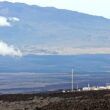Ralph Cicerone Commentary
September 27, 2011
In “Wedges Reaffirmed,” Robert Socolow revisits his 2004 paper (written with Steve Pacala), reasserts the validity of its main messages, and outlines the relative lack of progress toward its indicated actions. He also presents his views on why progress has been so meager and how to gain more momentum now toward ever more reliable solutions — by adopting a strategy based on continued learning and adjustments (or “iterative risk management”).
The overall framework of the 2004 Pacala and Socolow paper (and of its September 2006 Scientific American version by the same authors, but in reverse order) is difficult for readers who understand the Earth’s global carbon cycle, energy science and technology, and the fundamentals of climate science to reject. Indeed, I suggest that a large benefit of the new “Wedges Reaffirmed” piece might be that it stimulates more Bulletin readers and other scientists to read the original two papers.
The main challenge those original papers try to surmount is the stabilization of the concentration of atmospheric carbon dioxide at some target level. Decades of research have shown that natural sinks absorb about three billion tons per year of carbon globally (as carbon dioxide). This figure arises from estimates of the rates of uptake of carbon dioxide by oceans and of net biological uptake by photosynthesizing plants. The figure has been arrived at independently by stunningly precise measurements of atmospheric oxygen and related but more approximate calculations.
Thus, atmospheric carbon dioxide amounts will continue to rise as long as carbon emissions from fossil-fuel burning exceed three billion tons per year. In the last few years, these emissions have increased from about seven billion tons of carbon per year to about eight billion tons per year, and land-surface changes probably add another one billion tons of annual carbon dioxide emissions. Can one hope that natural sinks will increase in the future? Yes, but such hope does not qualify to be called a stabilization strategy, and there is evidence that growth in these sinks is likely to be small or even negative. Further, stabilization targets should take into account oceanic acidification brought about by more atmospheric carbon dioxide being absorbed into the oceans.
The original papers showed how a seemingly intractable problem can be disaggregated into a reasonable number of portions, or wedges, for which focused actions toward an overall solution are potentially feasible.
The original framework and its specific wedges also served to portray the scale of the challenges that humans face in trying to stabilize atmospheric carbon dioxide concentrations. The scale is enormous. Indeed, Socolow notes that the original seven wedges (each of one billion tons of carbon per year) have grown to perhaps nine such wedges now. I add that radiative forcing of climate change involves other greenhouse chemicals (methane, nitrous oxide, a number of fluorine-containing gases, tropospheric ozone) so that carbon dioxide, while the most important of the human-added gases, is not the entirety of the greenhouse problem. From an Earth-system science research point of view, the forcing due to black carbon particles and other aerosols and their feedbacks on greenhouse-gas forcings require much better quantification than is available today. Even more wedges are likely to be needed.
A 50-year path for human actions does deserve much more attention than the various, more frequently described 100-year paths. Even the shorter period of 50 years can lure us into believing that the next generation should be responsible for hitting the most difficult targets, rather than the current generation. Socolow proposes that even with the shorter period for our focus, it is likely that we will have to revise strategies and approaches, often in the light of new knowledge. His proposals are very valuable and sensible.
Ralph J. Cicerone
President
EXPERT COMMENTARY
National Academy of Sciences













